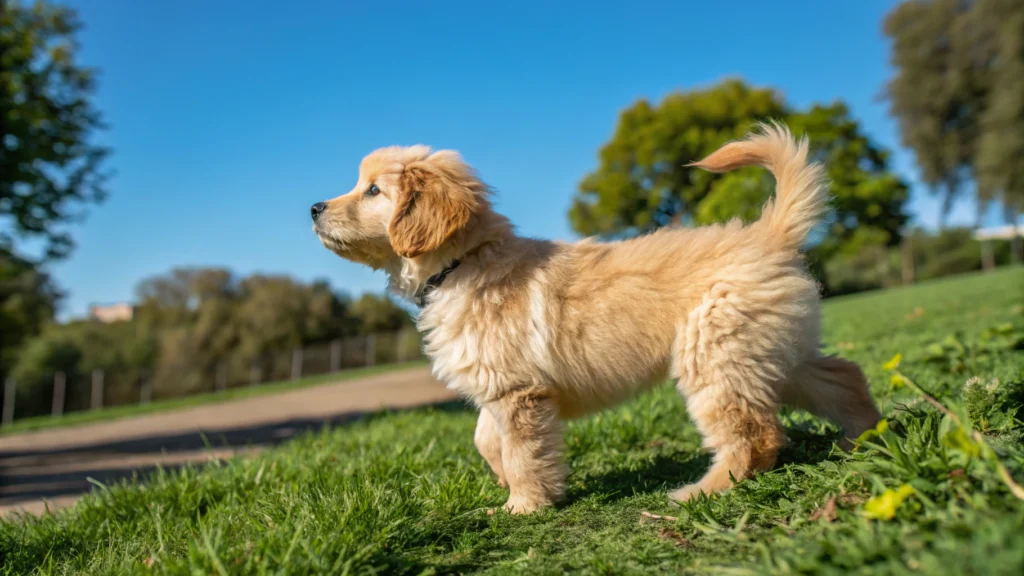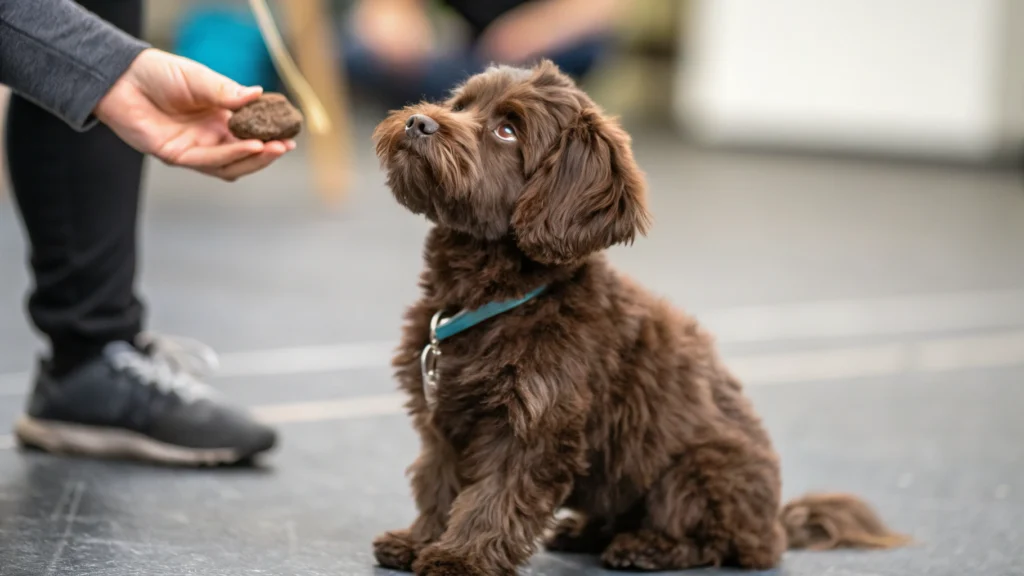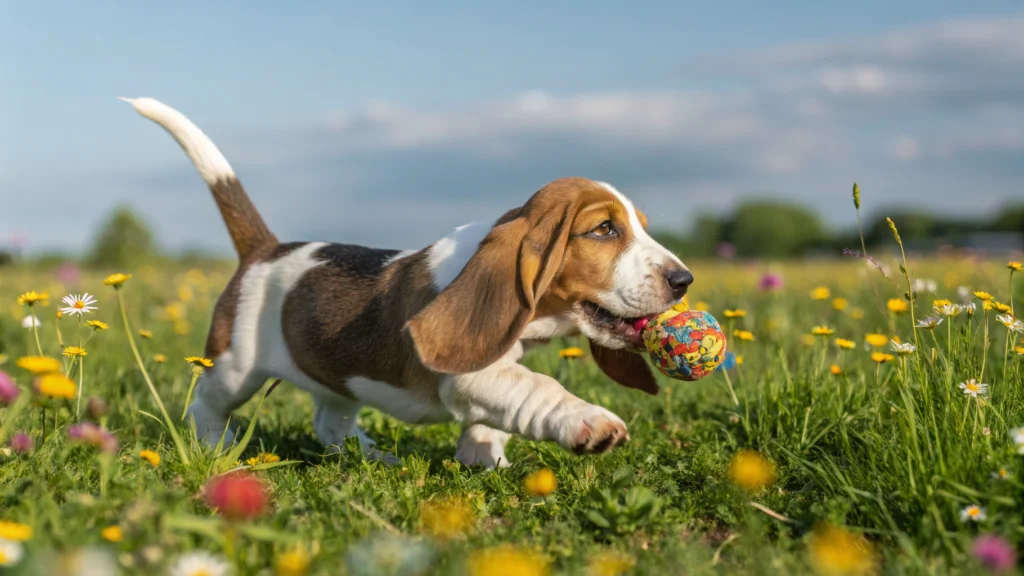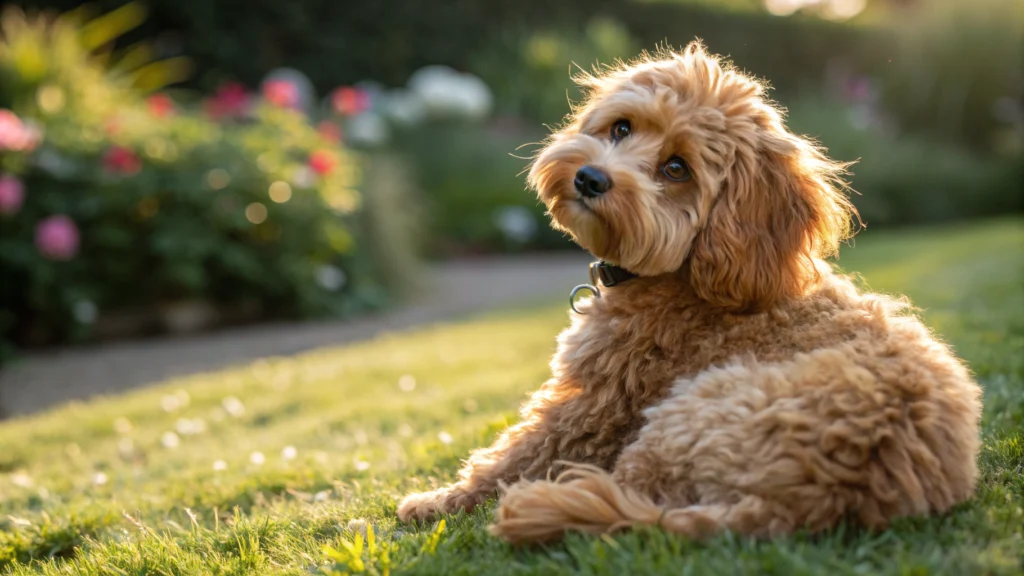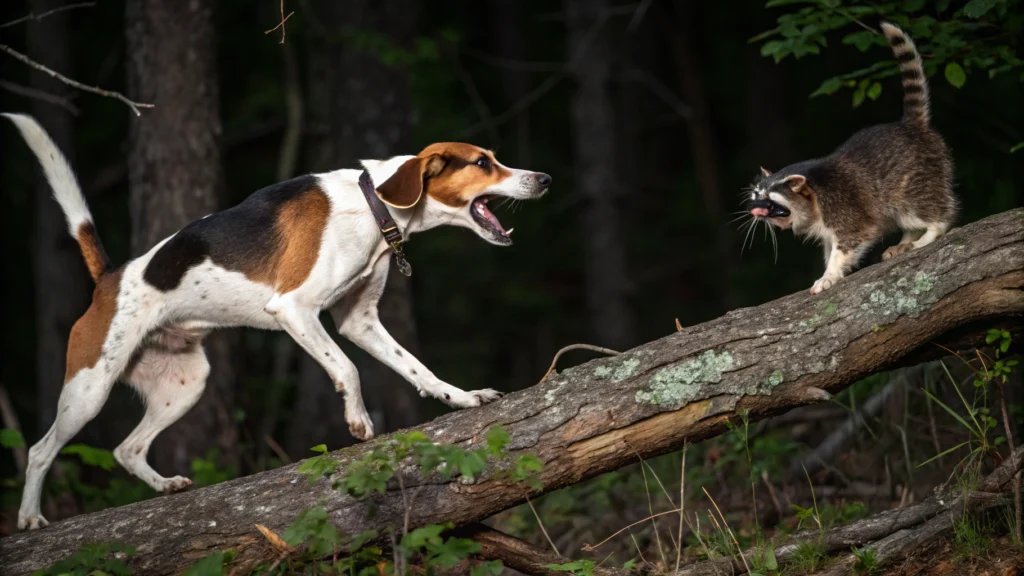
The Treeing Walker Coonhound Introduction
History and development
The came about in the heart of Colonial America, an example of canine excellence in the hills. Bred to be the best treeing dog available it is descendent from the English Foxhounds that were brought to Virginia in the mid 1700s. Thomas Walker was the first to breed this dog in the colonies, but the breed was refined by George Washington Maupin. In the 19th century, “Tennessee Lead” was no ordinary dog.
He was stolen from his owner, and then used to breed the finest example of the coonhound in the region. Once recognized by the United Kennel Club (UKC) officially in 1945 and the American Kennel Club (AKC) in 2012, “The Treeing Walker Coonhound” is rich in heritage, history, and production of a terrific hunting dog that is loyal and committed.
Name
The name “Treeing Walker Coonhound” is reflective of the dog’s purpose and roots. The word “Treeing” reflects the dog’s ability to chase most animals, including raccoons, up a tree and hold them until a hunter comes to finish the task. The word “Walker” is derived from the dog’s breeder, Thomas Walker. He founded one half of this breed we refer to as the Treeing Walker Coonhound in Kentucky.
The word “Coonhound” connects this to its intended animal quarry and use that connects the dog back to its intended use, and what it was bred to track and find. The name reports a past that ranges from speed, inquisitiveness, intelligence, perseverance, and heaviness, characteristics that separate this dog from all other dogs.
Popularity as “The People’s Choice”
As “The People’s Choice,” the Treeing Walker Coonhound has made its way into the hearts of people beyond the hunting trails. It has an easy-going manner and a zest for life that seemingly appeals to families and sportsmen alike. The breed has tremendous versatility in coon hunting events, where its hot-nosed tracking that thrives on fresh scents allows it to earn champion titles.
But, most families who enjoy living with a mateable and highly energetic dog admire the Treeing Walker Coonhound for its loyalty and joyfulness. Thus, the Treeing Walker Coonhound has become an iconic American breed, and while people know very little about the breed’s athleticism, they know they want a dog that looks like the Treeing Walker Coonhound.
Physical Characteristics
Athletic Build and Size
The Treeing Walker Coonhound is a canine display of athleticism with its physique designed for speed and stamina. It stands between 20 to 27 inches at the shoulder where males commonly fall slightly above females in height. The Treeing Walker Coonhound weighs 50 to 70 pounds but is lean and muscular enough to keep it athletic yet powerful.
The Treeing Walker Coonhound’s long legs and deep chest allows it to travel quickly across rocky and rough terrain while maintaining stamina for a long distance. Its conformation helps the Treeing Walker Coonhound to push through thick underbrush and cover ground without losing movement. This conformation combines with its athleticism leaves a lasting impression in the field.
Unique Coat and Color
The Treeing Walker Coonhound sports a shiny, smooth coat that serves a protective purpose from brambles and briars. Generally, the Treeing Walker’s coat is tri-colored, with significant contributions of white, black, and tan, in variable amounts and affiliations. This is best illustrated by examples that show white is the predominate color, and black markings, with the addition of tan, trim; black can also be longer marks than the white supporting it. In addition to tri-color (white, black, and tan), the possibillity of bicolor (white and black, or tan and black, etc.) is possible, although is less common.
The winter and summer seasons facilitate shedding for renewal and retention of hair. Shedding moderate and predictable, and is manageable with a simple comb. Both the example espoused above, along with the low-maintenance characteristic of grooming by removal, but minimal wispy hair or shedding reinforce the efficacy of scent collection that is enabled by the Coonhound’s coat.
Expressive Features
The Treeing Walker Coonhound conveys a gentle and pleading expression, as part of the hound group within the canine world. This is part and parcel of their eye size and placement: large and dark (typically), easily understood as soulful with an unrushed fire-like glance. The floppy ears are low enough to offer assistance in scent collection, and cutesy enough to invite pats and scratching opportunities from appreciators. The ears extend toward the tip of the nose.
The Treeing Walker, Coonhound does have a square muzzle and a wide skull that assist with the moderate expression of a dog that is plainly observant while attempting to appeal with further gesture; a saber-like tail held in any degree; even level for long periods, offers an alert presentation of both a dog fully engaged, and simultaneously employing play at the same opportunity with vigor.
Temperament and Character
Friendly and Affectionate Temperament
Inherently warm and social, the Treeing Walker Coonhound creates lasting bonds with humans and is happiest when they have human interaction. It is not uncommon for them to have a very close bond with their pet parent. They are very friendly to children and are very affectionate and patient which make them very suitable for an active family.
While cautious of strangers at first, the Treeing Walker Coonhound will quickly warm to new faces and will be loyal and affectionate to anyone that is nice to them. Their warm, friendly disposition and even temperament make them great companions at home and in the field.
High Energy Hunting Dog
The Treeing Walker Coonhound was bred to hunt and as such they have a boundless energy directed at their prey drive. Being very scent driven, they use their keen noses and energy to pursue a scent trail with their focused attention. Once they are on a scent trail, they will pursue it tirelessly and can travel quite a distance fast.
This energy is ideal for hunters, but needs to be managed and harnessed in the dog as outlets for energy. If they do not get enough to do some of their hunting instincts may transfer to restlessness. This shows how important it is to lead a dynamic life both to nurture the hunting instinct and help the dog deal with their energetic disposition.
Families and Pets Compatibility
While they are certainly skilled hunters, Treeing Walker Coonhounds get along with other dogs because of their temperament. The Treeing Walker Coonhound is a gentle breed, but with appropriate socialization, can also muzzle and live with any number of cats, albeit it needs monitoring around smaller animals due to their prey drive. Their happy disposition lends itself well to homes with confident older children who can train and play with them. With their mix of loyalty and socialability, Treeing Walker Coonhounds can maximize their full potential in various family type environment as long their needs are being met.
Hunting Ability
Treeing and Scent Tracking
The skill of treeing that takes the Treeing Walker Coonhound’s name everywhere they go is a sight to be seen. They have a nose that can pick up a scent at the barest of levels and can track down game such as raccoons, squirrels, or even bears. Once they have the game treed, they let hunters know by using their bay, in which they will switch into a rhythm, or chop bark if the animal is about to get away.
The hunters loved the clear voice of the Treeing Walker Coonhound when hunting on long grounds. This is also why some treeing walker coonhounds gained the ability to climb angled trees, though this is more of a rare occurrence with the breed when they are getting the job done.
Versatility Across Game
Although they are primarily known for hunting raccoons, the Treeing Walker Coonhound can hunt multiple types of game. They can hunt bobcats, cougars, and deer as well as small game, such as squirrels. Their versatility makes them able to adjust to a lot of hunting conditions. With speed and stamina, they can hunt individually or in a pack, and they can hunt in all types of terrain as well as weather conditions. In some states where it is legal to use a tracking dog for deer, they are valuable when they have a hot nose, just like their processors, and recover fresher trails first which increases their usefulness for multiple hunting styles.
Vocalization on the Hunt
The Treeing Walker Coonhound is recognized for its vocalization. It sounds like a deep resounding bay, very similar to a bugle call that travels throughout the forest when the coonhound is tracking. This allows the hunter to know exactly what the dog is doing and where the dog is located in relation to the game. When they tree, the sound changes to a steady choppy bark that is unique and articulate.
While their vocal ability is very dominant and often helpful to hunters, they often create challenges for their owners in a quiet setting, like at home. Their sound is unmistakable, striking a balance between melody and sensations of urgency. Collectively, both their unique vocal ability and early retrieval status cements them as the absolute best hunting companion on the planet!
Training and Exercise Expectations
Intelligence and Trainability
The Treeing Walker Coonhound is a super smart breed that learns commands quickly. It’s also a dog with a serious desire to please. Thus, it’s easy to train, especially with positive reinforcement. One of the challenges, however, is they can be very independent. While a dog is given a command, it may choose to stop in mid-command due to a smell or interest it catches.
With The Treeing Walker Coonhound it takes time and practice to work through these behaviors. With scent games and obedience training you can keep the dog’s mind occupied and make training fun, which means you can think about all the training you’re doing as you are hunting or even as a partner.
Exercise Requirements
The Treeing Walker Coonhound has an excessive amount of energy, requiring intense daily exercise. Ideally, you will engage it for a minimum of 20-30 minutes per day, if not longer. Running, hiking, and fetching can help satisfy its never-ending energy. While the dog is engaged in exercise, you certainly have a potential bad behavior on your hands if it does not get enough exercise. Preferably, controlled areas such as a fenced in a fenced in area are ideal as the dog may wander off, since it has a natural tracking instinct. Agility and tracking dog sports are great ways to exercise the Treeing Walker Coonhound, and keep the dog engaged and physically fit.
Challenges with Stubbornness
The Treeing Walker Coonhound’s independence will sometimes show in the form of stubbornness. It learns quickly, with reliable execution of simple commands. If the dog is bored or unmotivated, it will sometimes choose defiance, especially to the disbelief of the owner. Again, the use of food rewards while training with motivation suited for the prey drive may help hook the focus of the dog with your communication goals for training. While holding the dog’s attention, the handler also needs to be firm, but not harsh.
The handler must use encouragement, and bridge between firm communication and not interpreting the communication with he dog as harsh. Many handlers may become frustrated when the dog loses focus and that should not migrate toward the dog; the purpose of the scores is for tracking and hunting, which is the same for participating in the two sports. Overall, controlling the excitedness and stubbornness is part of the dog breed’s nature, and it is the job of the handler to either ward off the dog with positive teaching with firm and positive turnarounds with the dog, and regard and understand the dog nature is independent.
Health and Maintenance
Low Maintenance Coat
The short but thick coat of the Treeing Walker Coonhound is simply practical. It repels dirt and mud, and can be easily maintained with once a week brushing to remove the loose hair. Otherwise, the coat can shed seasonally – you will know when to comb more often. The coat on the Treeing Walker Coonhound seldom requires bathing except for the rare occasion of getting into some smelly adventure. A damp towel or hound glove can maintain the coat’s glossy shine, that the Treeing Walker Coonhound is known for is easy and an excellent time for bonding.
Ear and Teeth Care
Those floppy ears may be cute, but, they need to be examined regularly. Be sure to check for wax, debris, or ticks at least once a week and clean as necessary to avoid an ear infection, which is a common health problem for the Treeing Walker Coonhound! Use a veterinarian recommended ear wash to keep the ears clean. Healthy teeth are also important for the Treeing Walker Coonhound and daily brushing helps prevent dental disease to keep their amazing smiles. All it takes is a little preventive maintenance to keep your dog healthy and happy for a long time.
Health Considerations
The average lifespan of a Treeing Walker Coonhound is 12-13 years, and they are generally healthy dogs. Nonetheless, it remains important to recognize certain health issues such as hip dysplasia, which may present as limping or stiffness, but does not always occur with those symptoms. Polyradiculoneuritis is a very rare nerve inflammation that may also pertain to potential illness of the Treeing Walker Coonhound.
Common sense precautions, including being aware of the risks associated with these conditions and monitoring your dog’s condition, and regular vet checks with X-rays to check for healthy joints, may help to limit ongoing health issues in your Treeing Walker Coonhound. You will want to keep the rabies shots up to date for your Treeing Walker Coonhound.
Training and Exercise Requirements
Intelligence and Trainability
The Treeing Walker Coonhound is intelligent and will learn commands quickly. Their desire to please will help the training process, full cooperation will be much easier to achieve with positive reinforcement. The breed can be very independent which can be a puzzle if paying attention, they may STOP mid command, as a command is initiated, and be drawn to some scent or impulse.
Patience and consistency are critical. You can tap into their brains and pick up the scent games or just more obedience type drills, when training becomes a task of enjoyment, the Treeing Walker Coonhound and you are using their brain to do the two things they do best, finding and spending time with people.
Exercise Needs
The Treeing Walker Coonhound is a very active breed and requires to be exercised daily. Their need for exercise becomes more evident after the first 20-30 minutes of high-energy running, hiking, or retrieving, as they are built to have energy without a afterburn. Without a proper outlet for their high level of energy they may exhibit a behavior of boredom that leads to potential destruction.
Secure fenced in spaces are preference as well as the dog will naturally track/ hunt and lose interest in return. An appropriate activity can be agility or tracking events to redirect excitement so the Treeing Walker Coonhound is a happy breed and can maintain their fitness and endurance.
Dealing with Stubbonness
The independent part of the Treeing Walker Coon, sometimes takes on the form of stubbornness. Although they learn quicker than other breeds, an unsatisfied dog is more likely not to cooperate with the activity being provided. The trainer can use food as a reward or prey drive motivation to direct the dog to keep their attention on the training.
The handlers own firmness can deter a fumble from the dog as either distraction or unsureness, both occur and it would be good to meet it with firmness but encouraging as well. The experienced Handler will recognize the Treeing Walker Coonhound is the reactive breed of the two trained and are best found together.
Care and Grooming
Low-Maintenance Coat Care
The Treeing Walker Coonhound’s coat is short and dense, making it a functional asset. It is unlikely to absorb mud and dirt, and for the most part, brushing it weekly will be sufficient to remove any loose fur. If they happen to shed seasonally, you might have to brush them more often. As far as baths go, you will only need to give your coonhound a bath when he/she finds something stinky! In-between the bath appointments, you can maintain a glossy coat by using a damp towel or a hound glove, just so you get to feel your bond through grooming your Treeing Walker Coonhound.
Ear and Dental Hygiene
Those floppy ears are adorable but you will need to check them regularly. Make sure to look for wax, debris, or ticks every week, which can cause ear infections that are common in Treeing Walker Coonhounds. You should consult your vet for an ear wash that you can use to clean them up. Dental hygiene is just as important. You must brush your Treeing Walker Coonhound’s teeth at least once a day, to avoid getting dental disease and ensure that your dog maintains a healthy face! Just some of these little things to look out for will ensure that you have a healthy breed, and you will enjoy them for longer without any excess burden from health issues.
Health Considerations
The Treeing Walker Coonhound has an overall lifespan of 12-13 years and is usually considered healthy. However, you need to look out for things like hip dysplasia, which can make your coonhound limp or show stiffness. Polyradiculoneuritis is not common, but if your Treeing Walker Coonhound becomes lame, it involves the inflammation of the nerves, which can impact their mobility.
Yearly visits to your vet, even if your Treeing Walker Coonhound appears healthy will help scan for risks that might mitigate their future lifestyle opportunities. Your vet will usually suggest X-rays for bone and joint health, and this is a good opportunity for a survey of any potential chronic risks. Vaccinations for rabies are particularly important for Treeing Walker Coonhounds because their hunting lifestyle will mean prolonged periods of time hunting in the woods.
Coonhound in full fitness.
Socialization and Communication
Being social by nature, Treeing Walker Coonhounds thrive on interaction. A lot of interaction with people, dogs and different environments during a young age will raise their confidence and lessen suspicion against strangers. Regular play dates or visits to the dog park will fulfill their social needs. Treeing Walker Coonhound owners need to make sure that their need for companionship doesn’t interfere with the dog’s hunting desires. They want to believe that they are included in all family activities. A well socialized Treeing Walker Coonhound is a happy, adaptable dog that will contribute to your home.
The Modern Role of the Breed
More than Hunting: Family Pets
Even though these dogs are made for hunting purposes, the Treeing Walker Coonhound has transitioned into a loved and loyal family dog. With an affectionate and easy-going personality at home, they look like a different dog when they are out in the field. They are perfect for a household that has high levels of activity and also love it when they can play with young children or cuddle up next to you on the couch or by a fire. Using their loyal and adaptable personalities, the Treeing Walker Coonhound has the ability to shift seamlessly between the woods and the living room to provide a companion with deep purpose.
Engagement in Dog Sports
There are many ways to showcase the athleticism and intelligence of a Treeing Walker Coonhound through dog sports. They may run an agility course to learn their speed and dexterity or go tracking and utilize their fantastic ability to scent. With their very trainable nature, they are also most likely to participate in obedience competitions, though their independent mind never fails to create obstacles to learning new tasks. Regardless of whether the dog or the owner is competing for titles or just running, the Treeing Walker Coonhound remains sharp and engaged to have some fun at various levels.
As with any breed, if you are interested in a Treeing Walker Coonhound and have chosen to adopt, there are animal shelters and dog rescues looking to place these dogs in a loving home. Alternatively, you can choose from a list of reputable breeders who focus on health and temperament and should have puppies available for purchase or a decent price (ranging from $400 to $6,000 depending on the lineage).
In either case, due diligence will be necessary to find a reputable and ethical breeder that produces healthy dogs. Either way, you have made a commitment to take care of a Treeing Walker Coonhound that will be an energetic and affectionate part of the family for many years to come.
you may like it
